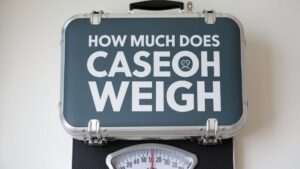A machine is a device designed to make work easier by altering the force, speed, or direction of motion. It typically uses mechanical energy to perform specific tasks and can be powered by various sources, such as electricity, fuel, or human effort. From simple tools like levers to complex systems like computers, machines have evolved to become an integral part of daily life.
Imagine a world without machines — no cars, no phones, no computers. It would be a world of limited potential, where tasks that now take seconds would stretch into hours or even days. Machines revolutionize everything we do, from transportation and communication to entertainment and industry, making the impossible possible.
The power of machines lies in their ability to multiply human capabilities. Whether it’s the automated precision of robots in factories or the vast computing power driving artificial intelligence, machines continue to shape our world, improving efficiency, creativity, and innovation. Their endless possibilities invite us to explore new frontiers in every aspect of our lives.
What is a Machine?
At its core, a machine is a device that uses power to perform a task.
Key Features of a Machine:
- Human-made or natural systems that make tasks easier.
- Energy transfer: Machines transfer energy in the form of mechanical work, electrical energy, or thermal energy.
- Movement: Machines produce movement, from simple linear motion to complex rotational movements.
- Force and motion modification: They manipulate force, speed, or direction to make work easier.
Each category brings its own distinct set of functionalities and efficiencies.
The Operation of a Machine
Machines work by utilizing power to create movement or force. The operation of a machine depends on the transformation of energy into mechanical work.
Energy and Power:
Machines can operate using various forms of energy:
- Mechanical energy: This includes kinetic energy (movement) and potential energy (stored energy).
- Thermal energy: Heat energy, often utilized in engines.
- Electrical energy: Used in electric motors and devices.
- Chemical energy: Found in fuels that power combustion engines.
The concept of mechanical advantage is crucial to understanding how machines help perform tasks. By altering the magnitude or direction of force, machines can reduce the effort needed to move an object.
Mechanical Advantage (MA):
Mechanical advantage is a key concept in machine operation. It’s the factor by which a machine multiplies the input force. MA can be achieved through levers, pulleys, gears, or other mechanisms that alter force and motion.

The mechanism of a machine refers to the parts and components that work together to perform the intended task. A mechanism converts input energy into useful output energy, like turning a crankshaft into rotary motion.
Common Mechanisms in Machines:
- Gears: Transfer rotational motion and force.
- Levers: Simple machines that amplify force.
- Pulley systems: Change the direction of force.
- Crankshafts: Convert linear motion into rotational motion.
Machines often combine multiple mechanisms to perform a variety of tasks.
Types of Machines
Machines can be broadly categorized into simple machines and complex machines. Let’s break these down to understand their characteristics and usage.
Simple Machines
A simple machine is a mechanical device that changes the direction or magnitude of a force. It is the fundamental building block of all machines. There are six classic types of simple machines:
- Lever: A rigid bar that rotates around a fixed point (fulcrum). Levers are used in see-saws, crowbars, and scissors.
- Pulley: A wheel with a groove that changes the direction of a force. Pulleys are common in cranes and flagpoles.
- Inclined Plane: A slanted surface used to raise or lower objects with less force, like ramps or slides.
- Screw: An inclined plane wrapped around a central shaft that converts rotational motion into linear force, used in screws and bolts.
- Wheel and Axle: A larger wheel connected to a smaller axle, which is used in vehicles and rolling machines.
Complex Machines
A complex machine combines multiple simple machines to perform a more intricate task. Complex machines can be found in virtually every aspect of our lives. Common examples include:
- Bicycle: Combines pulleys (chain system), wheels (for movement), and levers (pedals).
- Cars: Utilize gears, pulleys, levers, and more to ensure movement, speed, and control.
- Construction cranes: Integrate pulleys, levers, and wheels to lift heavy loads.
These machines are essential in industries like manufacturing, transportation, and construction, where the combination of simple machines amplifies force, speed, or efficiency.
Simple Machine Examples in Everyday Life
Here are some examples of simple machines in action:
- Levers: A crowbar used to lift a heavy object is an example of a lever. The force is applied at one end, and the object is lifted at the other end.
- Pulleys: A flagpole uses pulleys to raise or lower the flag.
- Inclined Planes: A ramp used to load items onto a truck reduces the effort needed to lift the object.
- Wedges: An axe blade is a wedge that splits wood.
- Screws: A screw holds two materials together by converting rotational force into linear force.
- Wheel and Axle: A doorknob is a simple wheel and axle mechanism.
How Machines Change Force and Motion
The essence of a machine lies in its ability to modify force and motion. Machines do this through several mechanisms:
- Changing the direction of force: A pulley can change the direction of a force, allowing a person to lift an object by pulling down on a rope.
- Changing the speed: Gears in a car transmission system change the speed at which the wheels rotate relative to the engine’s output speed.
Machines are optimized to provide a balance between these factors to perform tasks efficiently and effectively.
Power and Energy: The Fuel for Machines
Every machine requires a source of energy to operate. The type of energy depends on the machine’s design and purpose.
Common Sources of Power:
- Human power: Simple machines like pulleys or levers that are operated manually.
- Mechanical power: Steam engines, internal combustion engines, and electric motors all rely on mechanical energy.
- Electrical power: Machines like fans, pumps, and computers run on electrical energy.
- Renewable power: Wind turbines and solar panels convert natural resources into mechanical power.
Machines that harness and convert these various forms of energy into work help drive industries, transportation, and everyday household activities.
Prime Movers and Their Importance
Prime movers are machines that convert energy into mechanical work. They’re essential for providing the initial power needed to operate other machines. Examples of prime movers include:
- Steam engines: Used in trains and factories.
- Internal combustion engines: Power vehicles and machinery.
- Electric generators: Provide electricity for homes, factories, and commercial establishments.
Prime movers are the driving force behind the modern economy, allowing machines to operate across various sectors.
FAQs
1. What is a machine?
A machine is a device that uses energy to perform tasks by changing the force, direction, or motion, making work easier.
2. What are simple machines?
Simple machines, like levers, pulleys, and inclined planes, are basic mechanical devices that alter the direction or magnitude of force.
3. How do complex machines differ from simple machines?
Complex machines consist of multiple simple machines working together, such as a bicycle, which combines levers, wheels, and pulleys to function.
4. What is mechanical advantage in machines?
Mechanical advantage refers to the ratio of the output force to the input force, helping to multiply force and reduce effort in machines.
5. What types of energy do machines use?
Machines can operate on various types of energy, including mechanical, electrical, thermal, and chemical energy, depending on their design and function.
Conclusion: The Ever-Evolving Role of Machines
From simple machines that have stood the test of time to the highly complex systems powering modern society, machines continue to evolve and shape the future.
The study of machines, their mechanisms, types, and the energy they require is fundamental to understanding how our world functions. Understanding these machines and their components offers a glimpse into the brilliance of human innovation and our ongoing journey toward progress.
By understanding the principles and mechanisms behind machines, we can better appreciate the role they play in shaping our world.
M Binya Min

Zoe Faith is a dynamic writer at 88club.tech, specializing in a range of topics including tech, kids, fashion, travel, health, and English grammar. With a passion for simplifying complex subjects, Zoe creates engaging, easy-to-understand content for readers of all ages. Her unique style blends creativity with practicality, making her work not only informative but also fun and relatable for a diverse audience.








